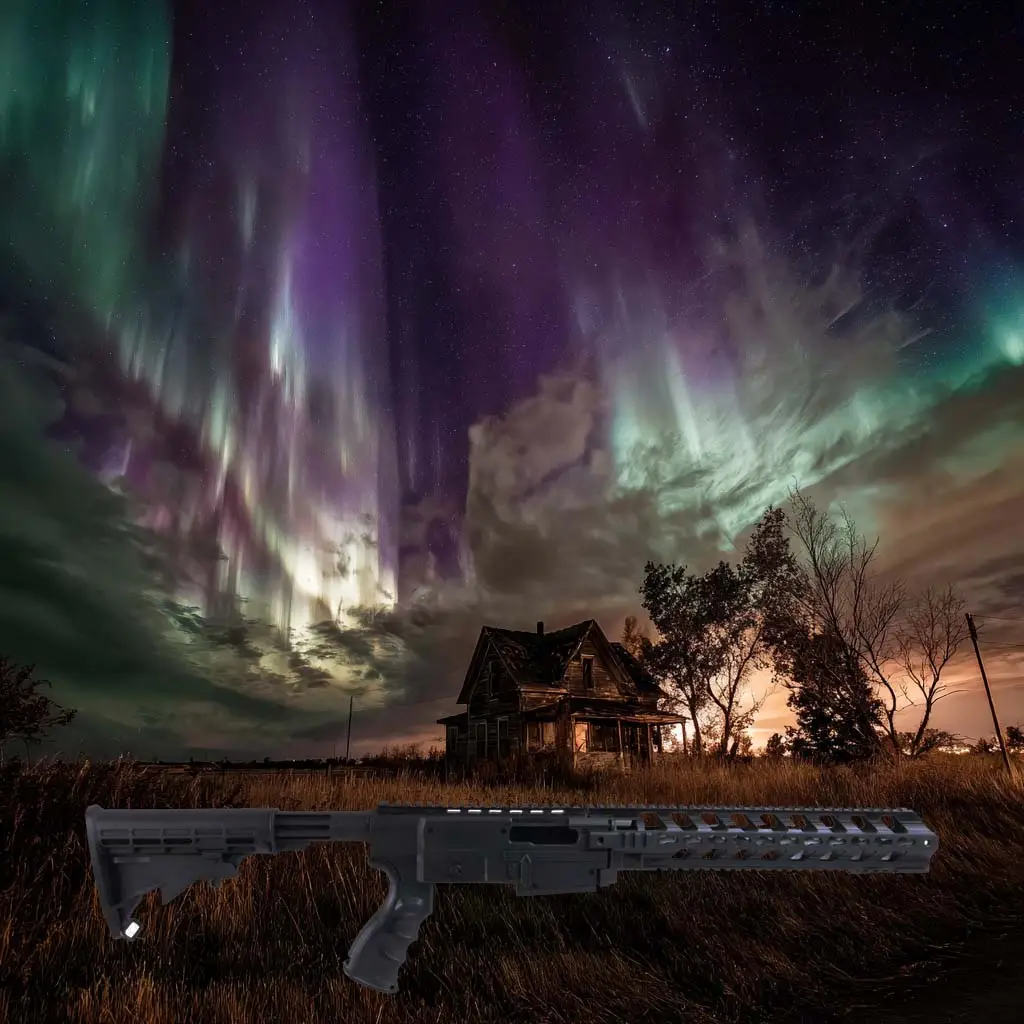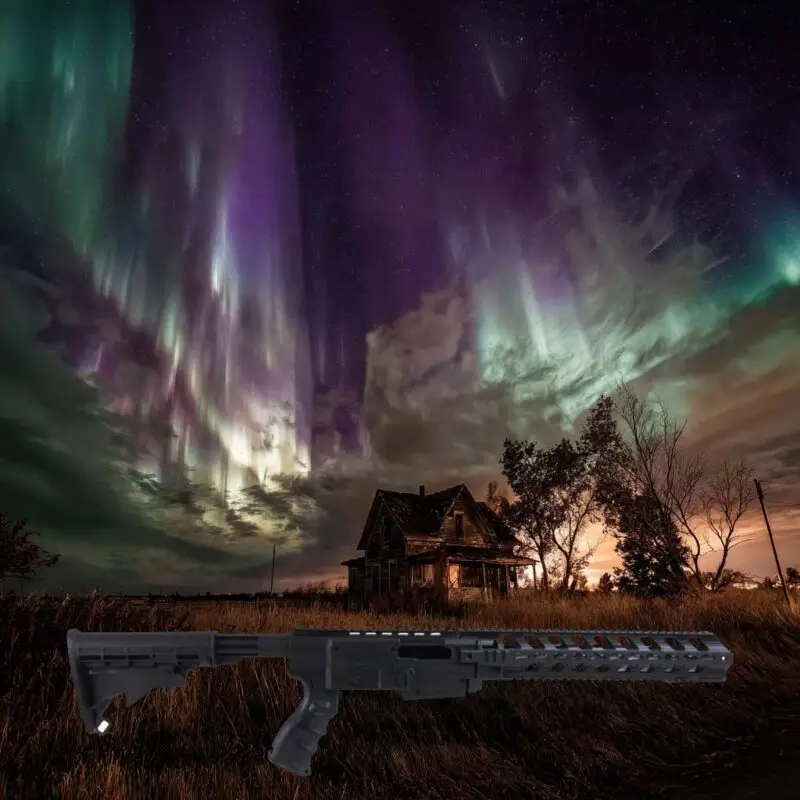Blog
Survivalists Beneath the Aurora with Ruger 10/22 Tactical Chassis

The night sky over the Midwest ruger 10/22 tactical chassis glowed an eerie green and purple, the kind of spectacle that made people forget to breathe.
The Northern Lights had descended further south than anyone could remember, and while families gathered on lawns with cell phones raised, a very different group of people was preparing for something far more serious.

Deep in the woods, a survivalist camp came alive. Generators hummed, radios buzzed with static, and weapons were cleaned by steady hands. To the untrained eye, it might have looked like paranoia. But to those inside the camp, it was foresight. They had lived through rumors of collapse before, and now, under the strange auroral glow, the world itself felt unpredictable.
Eddie, the camp’s unofficial leader, loaded a rifle across his lap. He wasn’t just interested in firepower for its own sake. He was a tinkerer, a man who could take a standard rifle and turn it into something sharp, efficient, and compact. At his feet lay one of his favorite tools of survival: a ruger 10/22 tactical chassis upgrade kit he had been working on. To him, customization was as important as stockpiling canned food.
The others respected Eddie not only for his planning but for his calm when the unexpected came. And tonight, the unexpected arrived in droves.

Reports filtered in over shortwave radio—power outages, strange atmospheric interference, and a chilling claim that drones were no longer functioning properly. The solar storm had disrupted systems everywhere. Worse, isolated communities reported shambling figures wandering highways. Skeptics called them hallucinations brought on by panic, but those who had seen them firsthand described something more sinister: the dead moving as if alive.
As the crackling radio spat out fragmented warnings, Eddie tightened the last screws on his rifle. “We don’t panic,” he told his group. “We prepare.”
The survivalists weren’t just gun enthusiasts—they were planners, builders, and families bound by a shared belief in self-reliance. They came from different walks of life—mechanics, former servicemen, teachers, and farmers—but all shared the same conviction that when the grid failed, survival would depend not on luck, but on preparation. Their camp, nestled deep in the pine woods, was more than a makeshift refuge; it was a functioning outpost. They fortified the perimeter with sandbags, barbed wire, and motion-triggered lights powered by solar arrays. Inside, barrels of water were stacked beside sealed containers of rice, grain, and medical supplies. Diesel drums stood lined up under tarps, marked with dates and usage logs, ensuring nothing went to waste.
Eddie, the group’s de facto armorer, worked methodically beneath a hanging bulb that flickered with the hum of a generator. His table was a spread of parts—springs, bolts, and polymer grips—organized with military precision. He wasn’t just showing off his collection; he was teaching. He explained how to strip, clean, and rebuild a rifle in the dark, how to reduce recoil for sustained accuracy, and how small mechanical advantages could make the difference between survival and failure.
When he spoke about weapon efficiency, his tone shifted from casual to reverent. He pointed to the differences between a standard factory rifle and one upgraded with a precision-engineered Ruger 10/22 tactical chassis system—the kind used by serious marksmen who valued adaptability over appearance.
The new chassis, lightweight yet rigid, transformed the old plinker into something lean and tactical. “Every ounce matters,” Eddie said, running his hand along the polymer frame. “You can’t afford extra weight when you’re running uphill with a pack.” The lighter setup improved balance, allowing for faster target acquisition and cleaner transitions. It wasn’t about firepower—it was about control, about making every movement count when the world demanded speed and precision. Around him, the others listened quietly, their faces lit by firelight and the cold gleam of steel, knowing that the lessons learned here might one day decide who made it through the storm.
The aurora’s glow made shadows stretch long across the trees, twisting in ways that unsettled even the veterans of the group. Then came the sound: a low groan, unnatural and guttural, from just beyond the treeline.
Eddie signaled for silence. Three men lifted their rifles, each fitted with a ruger 10/22 tactical chassis Eddie had recommended years earlier. The customization gave them better stability, especially under stress. No one fired yet—the survivalists weren’t reckless. But the figures emerged soon enough, lurching in the half-light, their movements sluggish but determined.
The survivalists realized what city dwellers still denied: this wasn’t panic, and it wasn’t rumor. Zombies had come to the woods.
The first shot rang out sharp and decisive. The camp defended itself not with chaos, but with discipline. For years, they had prepared for doomsday. Under the dancing auroras, it had finally arrived.
And while the world above ground was unraveling, Eddie and his people had never been more certain—they were exactly where they needed to be.
